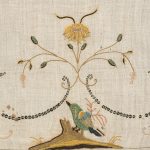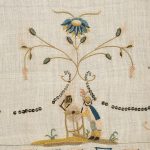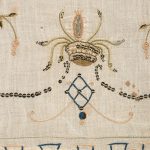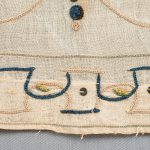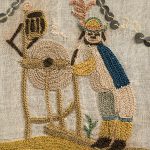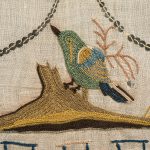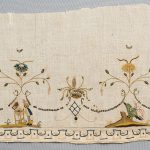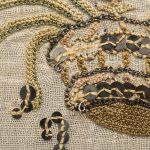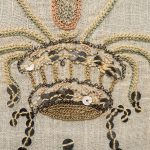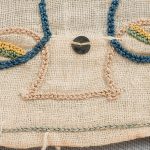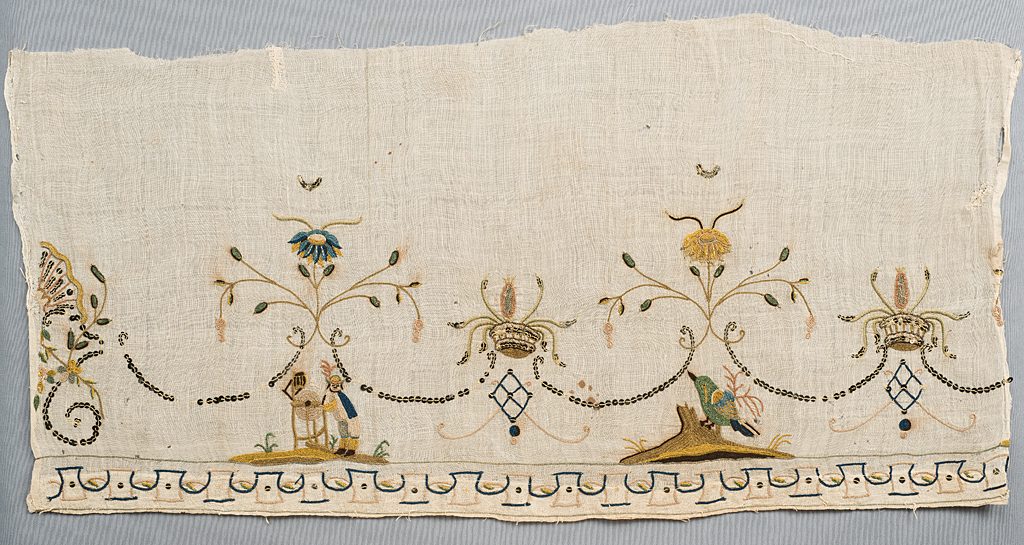
Culture: French or Indian
Title: Textile fragment
Date Made: 1700-1800
Type: Textile
Materials: Textile: polychrome silk floss embroidery (chain stitch); metallic sequins
Place Made: France or India
Credit Line: Gift of Mildred J. Davis
Accession Number: 97.035
Collection: Historic Deerfield
This embroidered fragment, with polychrome silk embroidery on a very fine cotton mull ground, has the additional embellishment of metal sequins and select areas of metallic thread. When new and shiny, these metallic elements would have added depth and sparkle to the garment. This fragment is believed to have been part of a gown or petticoat hem. It came into the collection as part of a large collection of textile fragments from Mildred J. Davis (Mrs. C. Wingfield), of New Bern, North Carolina, in 1997. According to accession records for this donation, the donor indicated that the large number of textile fragments were purchased mostly in New England (specifically New Hampshire, Massachusetts and Maine) in small, out-of-the-way shops during the mid-twentieth century. Some fragments were bought in England and Scotland. The fragments date from the eighteenth century through the early twentieth century, and are important for their representation of many different kinds of textile techniques. The purchases, which were made by the donor herself, were advised or informed in part by Gertrude Townsend, the first curator of textiles at the Museum of Fine Arts, Boston, as well as “Dos” Cavalo.
The fragment features several embroidery motifs described as Chinoiserie, or the imitation or evocation of Chinese (and, more broadly, “Eastern”) motifs and techniques in Western art and material culture, especially in the eighteenth century. On the left side of the fragment, we see a stylized blue flower hovering above a small figure, wearing a feathered hat, standing at what looks to be a spinning wheel. A line of sequins draws our attention to a central motif, which resembles a hanging basket with a plant inside (perhaps a closed tulip). Moving along further to the right, we see another flower, in the same style as the one on the left, but this time it is a yellow color. Beneath the flower is a hummingbird, about the same size as the figure on the left. Beneath these figures is a border composed of a simple reciprocal, linear design. The embroidery and sequins along the hem of a gown, as well as the fragment’s remarkably good condition, suggests that the garment was not intended for everyday use.
The garment to which this fragment once belonged was likely made between 1790 and 1805, and possibly India, according to Ned Lazaro, Collections Manager and Associate Curator of Textiles at Historic Deerfield. The collections database attributes its country of origin to France or India. The uncertain origins of this fragment and its possible imitation of “Eastern” motifs, like other objects in the collections, creates more questions than answers. The fragment occupies an ambiguous space between the East and the West, which encourages us to ask: what cultural, political, and economic contexts created the space for objects like this to be produced, collected by woman in New England, and deposited in the Historic Deerfield collections?
Collections Database: HD 97.035
Collections Database: Credit Line Search Query, “Mildred J. Davis”
